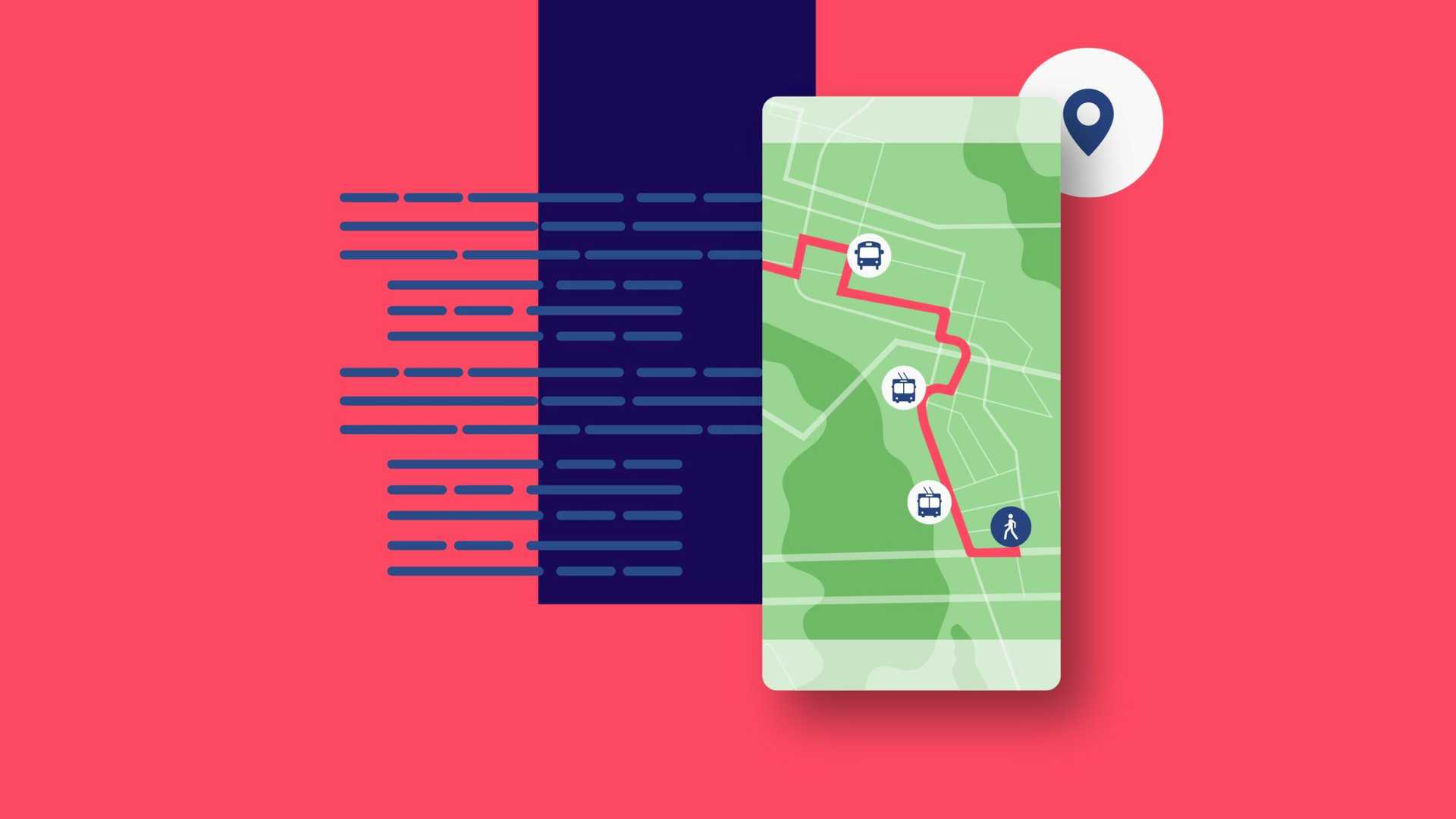
February 19, 2024
In today’s digital era, route planner apps have become essential tools for navigating our busy lives with ease. Beyond offering simple directions, they optimize routes, consider real-time traffic, and offer alternative transportation options, changing how we plan and travel.
As we enter 2024, the demand for intuitive route planner apps keeps on rising, offering both challenges and opportunities for developers and entrepreneurs. In this blog, we’ll dive into the process of building such an application from scratch.
Whether you’re an experienced developer looking to expand your skills or an aspiring entrepreneur with an innovative vision, this guide is intended to offer valuable insights and practical advice. Let’s explore the essential steps and considerations needed to develop a standout route planner app perfectly suited to modern life.
Why Route Planner Apps Matters?
The Route planner for delivery drivers is more than just convenience; it’s a powerful tool for seamlessly navigating through complex routes and tight schedules.
Here’s why route planner apps are essential:
- Time efficiency: Route planner apps optimize routes, saving time and guaranteeing timely deliveries, crucial for delivery drivers dealing with multiple stops. They assist drivers with staying away from gridlock and street terminations, guaranteeing they reach their destinations efficiently.
- Cost savings: These apps help cut operational costs by reducing fuel consumption and mileage, which is beneficial to both drivers and businesses. Real-world examples demonstrate how implementing a route planner app leads to significant savings in fuel expenses over time.
- Enhanced productivity: Route planner apps help to streamline planning, permitting drivers to focus on tasks other than navigation, thus boosting productivity. With intuitive interfaces and smart features, these apps simplify the planning process, empowering drivers to deal with more deliveries in less time.
- Customer satisfaction: Effective route planning helps in prompt deliveries making customers satisfied, which encourages customer loyalty and generates positive reviews. By giving precise delivery ETAs and minimizing delays, route planner apps contribute to overall customer satisfaction and retention.
- Competitive advantage: In a competitive market, having a reliable route planner app can set delivery drivers apart, drawing in more clients and opportunities. Faster and more reliable service can be provided by drivers with effective route planning tools, giving them an advantage over rivals and ensuring repeat business.
Overall, the significance of route planner apps cannot be overstated because they provide essential solutions for efficiently and precisely navigating modern complexities.
Essential Steps Involved in Creating a Route Planner Application
Building a route planner application from scratch requires careful planning, meticulous design, and proficient development skills. Below are the essential steps involved in creating a route planner application, guaranteeing its functionality, effectiveness, and user satisfaction.
Step 1: Planning and designing your app
Define the needs of the intended audience and carry out market research to learn about rival apps and user preferences before beginning development. Follow the principles of user interface design that are unique to route planner apps, focusing on user-friendly navigation and interfaces that appeal to the eye.
Sketch wireframes and prototype your app to visualize its layout and functionality, ensuring it meets user expectations and facilitates communication between designers and developers for a refined final product.
Step 2: Setting up the development environment
In 2024, effective app development will require the right development frameworks and tools. Making informed decisions and ensuring that your app remains relevant in the future can be accomplished by researching and evaluating the most recent technologies.
Choose tools that meet your project prerequisites and lay out the backend framework, including servers and databases, to support the application’s functionality. Configuring APIs and integrating third-party services like mapping and geolocation enhance features and provide real-time data to clients.
Step 3: Building the frontend
Your route planner app’s front end is essential for user interaction and experience. Apply UI design principles that emphasize clarity and simplicity, and think about including interactive elements like maps and sliders to increase user engagement. As we look ahead to the future of front-end development, staying updated on emerging technologies and design trends will be crucial for creating a seamless user experience.
For precise route visualization, use APIs like Google Maps or Mapbox to integrate mapping services and geolocation features. Allow users to input starting points, destinations, and stops and provide feedback on route suggestions by implementing user input functionality for customizing routes and preferences.
Step 4: Develop the backend
For effective route planning and management, it is essential to develop a robust data model for routes and locations. Utilize algorithms for route optimization to determine the most effective routes based on distance, traffic, and user preferences.
Furthermore, incorporate external APIs for real-time traffic and route data to enhance the accuracy and reliability of route recommendations.
Step 5: Testing and debugging
If you want to find and fix any problems with your route planner app, thorough testing is necessary. Conduct unit and integration testing to guarantee seamless functionality and scenario testing to validate performance under different circumstances.
Debug common issues like navigation errors and inconsistencies using appropriate tools and techniques, and gather feedback through user acceptance testing to make necessary improvements. This may entail recruiting beta testers or carrying out usability tests to evaluate the app’s performance and overall user experience.
Step 6: Deployment and launch
Deploy your app to app stores or web hosting platforms once testing is finished. Optimize performance and scalability by improving server infrastructure and implementing caching mechanisms. Examples of marketing strategies to attract users include creating a compelling app store listing, communicating with influencers, and making use of social media channels.
Continuously monitor performance post-launch, iterate based on user feedback, and update the application consistently to keep clients engaged and satisfied.
By diligently following these steps and utilizing the latest technologies and methodologies, you can create a standout route planner app that meets the needs of users in 2024 and beyond.
Conclusion
To sum up, creating a route planner application from scratch is a rewarding endeavor that requires careful planning, design, and execution. From defining user requirements and setting up the development environment to testing, deployment, and beyond, we’ve gone over the essential steps in this process throughout this guide.
As we look to the future, the demand for route planner apps is expected to continue to rise, driven by advancements in technology and the increasing reliance on digital solutions for navigation and logistics. By following these steps diligently and utilizing the latest technologies, you can create a champion route planner app that meets the needs of users.
Contact us
Swan Buildings (1st floor)20 Swan StreetManchester, M4 5JW+441612400603community@developernation.net



